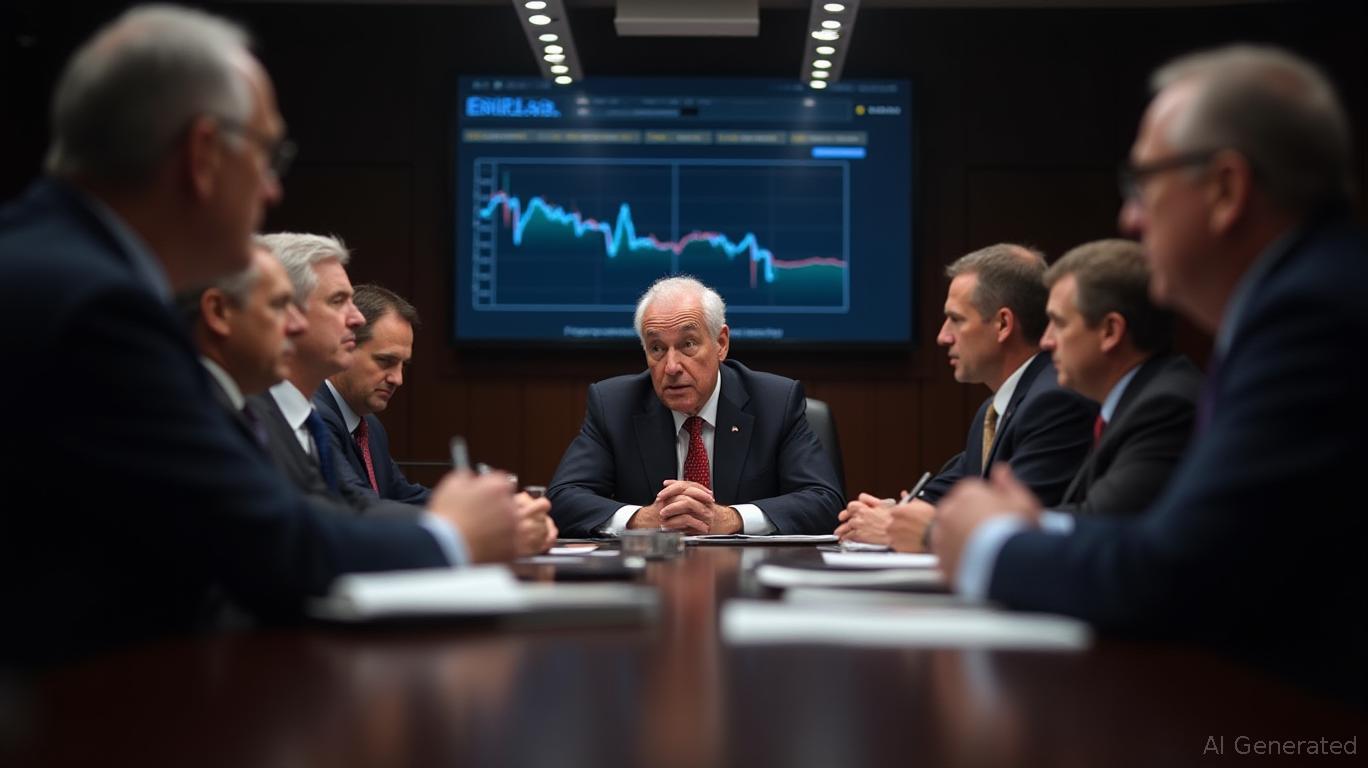Stubborn Inflation and Tightening Liquidity Prompt Fed to Reverse Course on Policy
- Fed to cut rates by 0.25% and pause QT, reversing two-year liquidity-draining strategy amid labor market fragility and stagflation risks. - 5-week government shutdown slashes 0.2% weekly GDP growth, exacerbating labor market strain and corporate balance sheet adjustments. - Intel and Eversource Energy restructure finances through debt reduction and asset sales amid macroeconomic uncertainty. - Fed's QT halt aims to prevent reserve scarcity as repo rates rise, with potential balance sheet expansion planne
This week, the Federal Reserve is expected to unveil a major change in its monetary policy, with plans to lower short-term interest rates by 0.25 percentage points and bring its balance sheet reduction—known as quantitative tightening (QT)—to a stop. Fed Chair Jay Powell outlined this policy shift in his October 14 address, signaling an end to the central bank’s two-year campaign to withdraw liquidity from the financial system. At least one dissent is anticipated from newly appointed Governor Stephen Miran, who has pushed for deeper rate cuts due to worries about a softening job market and persistent inflation threats, according to
This policy adjustment comes as the ongoing government shutdown continues to drag on economic growth, reducing real GDP by about 0.2% each week and intensifying concerns about a drawn-out slowdown. Now in its fifth week, the shutdown has left 750,000 federal employees without pay and disrupted hiring at state and local levels, adding to the strain on a labor market already showing signs of weakness. The Fed’s October Beige Book pointed to “stagflationary” trends, such as persistent inflation in services and “opportunistic pricing” by companies, fueled by less competition and higher tariffs, as highlighted in KPMG’s report.

The move to end QT also stems from rising worries about liquidity in the overnight fed funds market, where reserves are shrinking as balance sheet reduction nears its end.
Companies are also adjusting their finances. Intel, under new CEO Lip-Bu Tan, has focused on cutting debt and increasing operational flexibility, supported by $8.9 billion in government funding and a $5 billion investment from Nvidia. The company’s CFO stressed a cautious approach to capital expenditures, in line with Tan’s strategy of “waiting for demand before investing,”
The Fed’s decision to cut rates and pause QT comes just before the release of key inflation data, including the September CPI report, which showed inflation rising less than expected. While this gives the Fed more room to focus on supporting jobs, experts warn that rate reductions alone may not be enough to counteract the negative effects of the shutdown and tariffs. The October 24 economic calendar on includes important data points like core CPI and manufacturing PMI, which could influence the Fed’s ultimate policy choices.
With early signs of stress in the repo market and companies adapting to changing economic conditions, the Fed’s actions indicate a shift toward supporting growth while keeping inflation in check. As markets prepare for a record $31 billion in
Disclaimer: The content of this article solely reflects the author's opinion and does not represent the platform in any capacity. This article is not intended to serve as a reference for making investment decisions.
You may also like
Ethereum ETF Inflow Surges as BlackRock Boosts Its Holdings
Quick Take Summary is AI generated, newsroom reviewed. Ethereum ETFs recorded a $133.9 million inflow, signaling strong investor confidence. BlackRock purchased $72.5 million worth of Ethereum, boosting institutional sentiment. Rising institutional demand for Ethereum shows growing long-term faith in ETH’s fundamentals. Continued inflows could mark a major turning point for Ethereum’s mainstream adoption.References UPDATE 🚨 $ETH ETF SAW AN INFLOW OF $133.9M YESTERDAY! BLACKROCK PURCHASED $72.5M IN ETHEREU
American Express Denies XRP Partnership Amid Viral Claim
Quick Take Summary is AI generated, newsroom reviewed. No official statement confirms an Amex-Ripple deal. The viral post repurposes old 2017 partnership details. "Real Token” claims lack credible financial data. Experts advise caution against misleading crypto posts.References X Post Reference
Circle's ARC Blockchain Positions Itself as an Impartial Foundation for Worldwide Digital Finance
- Circle launches ARC blockchain testnet with global institutions to build decentralized cross-border payment infrastructure. - Partnership with ClearBank enables MiCA-compliant stablecoin transfers across Europe, accelerating institutional blockchain adoption. - ARC's 60+ stakeholders include MetaMask and Chainlink, targeting multi-chain swaps and AI tools for decentralized finance. - Circle's 8.88% stock surge reflects market optimism despite regulatory challenges in balancing decentralization and compli

Gold Surges to $4,275 as Confidence Wanes; Ozak AI Crypto Stands Out as a Reliable Growth Opportunity
- Gold prices hit $4,275/oz by 2026 as trust in traditional finance wanes, with JP Morgan forecasting $5,055/oz driven by central bank demand. - Ozak AI emerges as a structured crypto alternative, offering $OZ tokens at $0.012 in presale with projected 12x growth to $1 by 2026. - The AI-driven platform combines DePIN and cross-chain tech with 6.5M-node Meganet, attracting $4.2M in funding through secure smart contracts. - Unlike volatile legacy cryptos, Ozak's phased presale roadmap targets $0.014-$1 price
